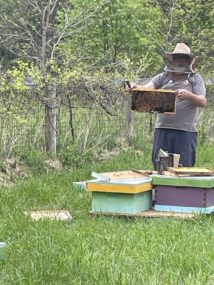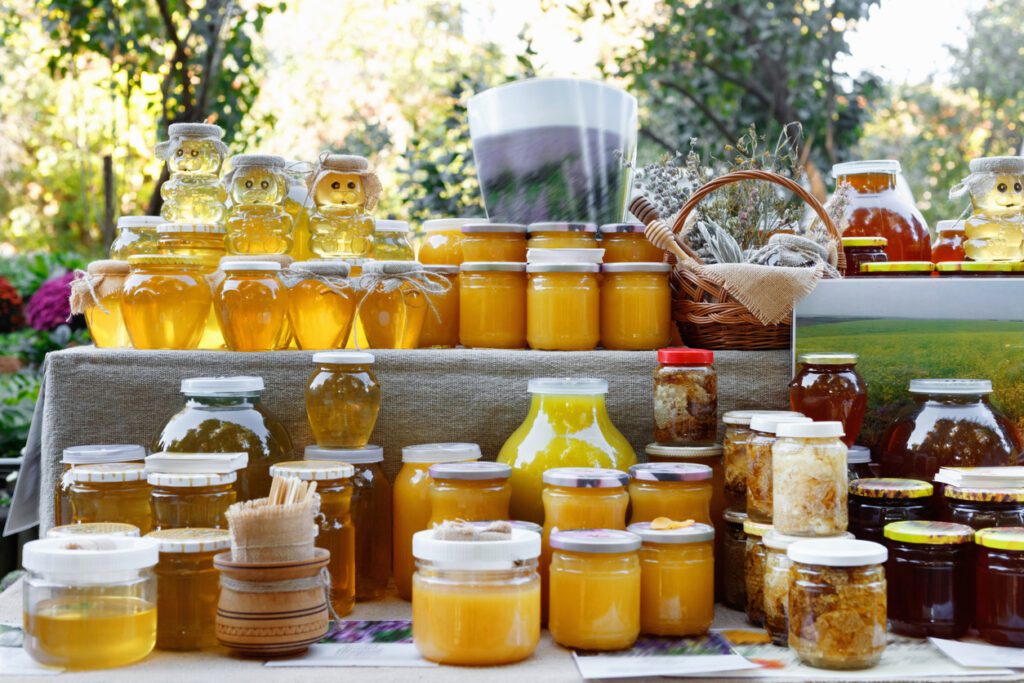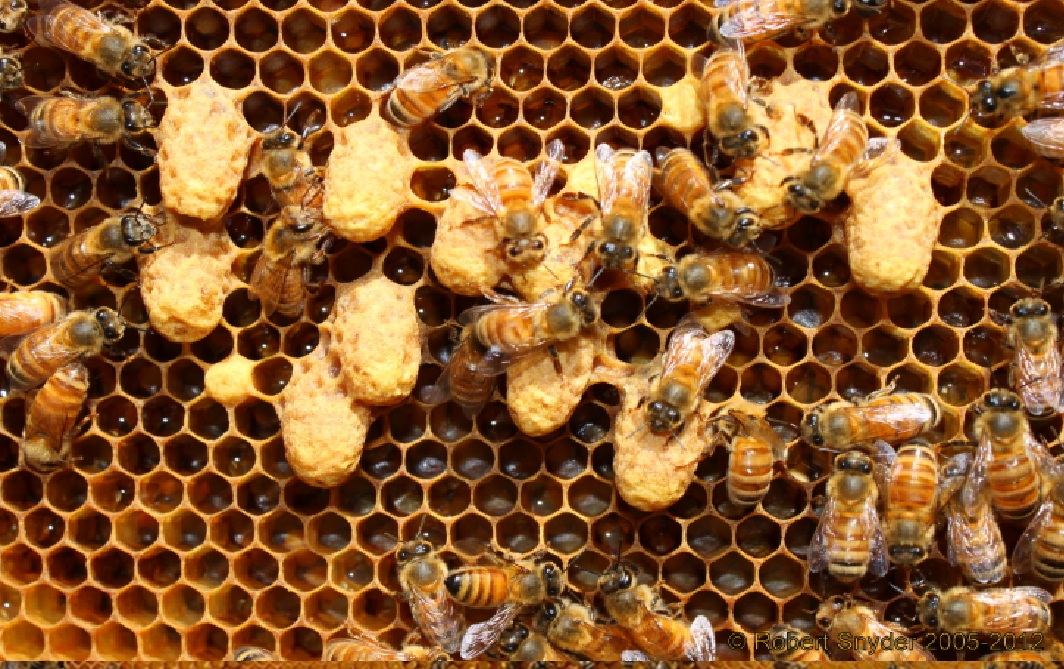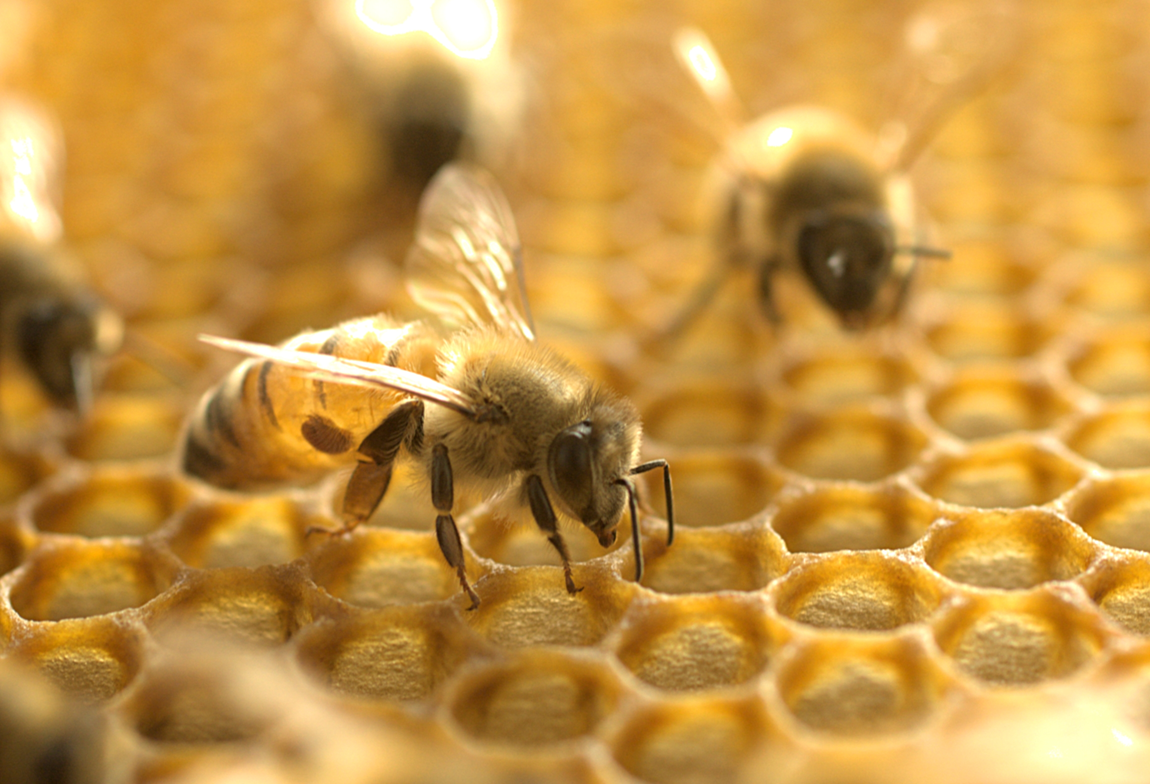

Know Your Numbers – the Math and Accounting Behind Success.
Today, it is almost impossible to get started in farming without equity or going into debt. But you can do this in stages. The wonderful thing about finance a farm apiary is that you do not need a 50- or 100-acre farm. We don’t own a farm. We rent.
Success takes 3 Management and Planning elements- Financial , Resource , and Knowledge/Risk.
Think about it. By renting we save:
- Property tax
- Upkeep and maintenance
- Capital gains
- Interest on the mortgage
If we were to buy a $1 000 00 farm, and spend $20k a year on upkeep and maintenance, and spend $1 000 000 on the mortgage interest, then the farm will cost us in 30 years $1600 000 us, and the heir will have to pay the capital gains.
I would need to pay $53 333 in rent a year or 4 444 a month to equal that. So, until the cost of our barn rental, extractor room rental, etc reaches $4 444 then it is not cost effective to buy a farm.
This same math can be used to determine whether it is cost effective to buy an extractor line, or truck, or box lift, skidsteer, fork lift, etc. It is often better to put off big purchases for a year or two, bank what you would have paid in the interest payments, and then buy the tool or vehicle you need.
There is an entire accounting strategy behind learning to farm debt free. The first 10 years are hard, but after that, you are smooth sailing.
Farm Management Strategies
When I tried to google farm management strategies I found lots of posts that told me I needed to manage soil, and plan grazing rotation, or strategize the harvest. There are not technically strategies, but tasks.
A strategy is something that is repeatable, or reproduceable with a high expectation of generating the same results.
- What are you going to do if you have 50% winter loss?
- What are you going to do if an employee ghosts you in the middle of honey extraction?
- What are you going to do if your hive gets a virus, or AFB
- How are you going to grow? A little at a time? In one big jump?
Let’s look at another example.
You wanted to grow from 50 hives to 150 in one year. What is your strategy?
Do you have enough equipment? Will you work to collect all the equipment you need before hand, or will you buy a little as you go? What is financially most feasible.
We did try the ‘buy it as you go’ strategy once, and it failed. First, when we were ready to buy more bee boxes there were none available. This also happened for Fondant Patties in the fall. This had a major impact on our numbers.
- We did not have enough boxes to grow our hive numbers, and harvest honey, so we lost about $30k.
- We did not have enough resources to overwinter all the hives well.
- We had about 20% losses in Nov/Dec because we were not able to meet the bees needs.
Now, we make sure we have all the tools, boxes, etc that we need before the season, and this has solved a lot of problems.
A good strategy prevents problems and offers solutions for those problems.
One tactic we tried in 2024 was to document every hive, and every queen. How was she laying, how strong was the hive, how many times could we split a hive. Etc.
This took all the guess work out of whether a queen should be given a second chance, or pinched. It showed us that the yard we thought was the strongest, wasn’t. It gave us a clearer picture of how a nuc evolves into a hive.
Most importantly, we were able to see an abnormality in the growth of varroa mites, and were able to treat aggressively before the ‘it’s a bad year’ message started to filter through the beekeeping community.
This strategy worked so well for us that we created an accel database to track our hives from now on. We chose a database over a subscription service because we can edit it to be exactly what we want. We can add to it. And we can delete, without paying large fees.

How to Develop a Strategy
The first thing you need to understand is that your strategy will constantly be evolving. Some of your plans, like our plan to buy equipment when we needed it, will fail. Other ideas you have will succeed but will not be reproduceable with the same results.
#1 – Hire a professional. You can hire a freelance farm manager, farm accountant, or consultant. Once you have an idea of the direction you want to go, you can hire someone to create a business plan.
#2 – Learn. The internet is full of project management, farm management, and strategy courses online. The ministry of agriculture also has courses.
#3 – DIY – After you learn, you can do it yourself. This is the method I suggest. If you did the initial research and learn the strategies, then you can see trends and patterns in the data.
Resources you can make use of:
Templates – there are templates for everything.
Samples and online documents – you can find almost anything online. I found apiary business plans, strategies, SOPS. It is always smart to take advantage of other people’s work.
Online Courses – Learn Anything, On Your Schedule | Udemy
fiverr.com – hire people to help with planning, bookkeeping, and business plan writing.
Local Business Offices – free resources.
Ministry of Agriculture – resources, workshops, training.
Local Beekeeping Clubs – mentors, used equipment, nucs, etc.
Ontario Beekeeping Association – OBA – an amazing resource to help beekeepers learn husbandry, and how to grow a beekeeping farm business.
YouTube – learn the good, the bad and the ugly. After watching a few hundred videos you will start to see trends shared by successful beekeepers.
Excel – Spreadsheets can take all the guess work out of beekeeping. From budgets to projections, bookkeeping to contact lists, to yearly bee management calendars. This one tool can help you manage everything in your business.
Financing an Apiary Farm
Once you have a strategy then you will be able to apply for farm grants, cost share programs, etc. Do not go to the bank until you have researched every option available.
OBA – Click Here: Ontario Beekeepers’ Association Lists of resources, connections to financing opportunities, etc. The biggest advantage is the group liability insurance.
Government Programs – from interest free loans and grants, to employee subsidies. There are a lot of programs designed to help farmers in Ontario succeed, thrive, and grow.
Click here: Advance Payments Program. If you are going to jump in and invest a lot into your bees, you may want to look at this interest free loan to reduce risk.
Click Here: Farm Grants Ontario: Do You Know These 57 Ontario Farming Grants & Loans? –
OSCIA Portal! https://osciaportal.org/ Cost share programs, biosecurity courses, etc.
Investing in Your Bees – You can invest your own money into your bees. The return on investment is far higher than investments. The risk is about the same as mutuals, but higher than RRSPs.
One rule of thumb, do not use ‘estate’ money for temporary assets. Do not use inheritance money on something that will be gone in 10 years, or cannot be easily resold if your venture fails. You may be excited to start, but you may find it better to take 5 years to build up, and reduce risk, than jump in 100% in the first year.
Time Resources
There is never enough time to do everything on a farm, or apiary. Not having enough time to inspect, process honey, and wrap hives for the winter will have more impact on your business success than the amount of money you have to invest.
You only have so many hours in a day. This will limit your success unless you get help.
Human Resources
#1 – do NOT take advantage of the work your family does. Pay them well – including your spouce. You cannot do what you do, if they do not pick up the slack.
Not hiring summer help can sabotage your success. Yes, it takes a while to learn how to hire the right employees, and you will have problems keeping employees at the beginning, but you cannot run a commercial business on your own.
Beekeeping Equipment
All beekeepers have bad backs. Why? Because they do not buy the equipment needed to do the job. We own huge trollies, a mini skid steer.
Sometimes it is more cost effective to use equipment instead of hired labour.
Beekeeping Supplies
Make sure you have more boxes, lids, and bottoms than you will need. Each hive needs a minimum of 3 boxes, and should have 4 boxes. So if you want 100 hives, you need 400 boxes. Make sure you have enough supplies.
Profit is Not Your Money.
I have been a business consultant for almost 20 years. The #1 way business owners sabotage their wealth is by spending farm money.
One common strategy for farm success is to bank 1 year’s expenses. You will not harvest for 1 year, so bank all the expenses until next harvest.
Next, it is smart to bank 20% for emergencies. Now, bank the money you need to grow. What is left, is your profit.
In the first couple of years you will not understand all of the expenses, so it is possible to under calculate what it will cost you.
Good business management practices say that you should invest everything back into your business for 5 years.
You CanNot Fail
Until You Quit
Most people quit when success is in their grasp. This is a common challenge when a business coach is helping a business owner.
One of the most frustrating things is that the average person quits their business when success is within reach. Why? Fear of the unknown. Fear of success. Imposter syndrome, the list is varied, but these are the most common.
There are some legit reasons, like you realize that a business is a full time endeavour. Business owners do not get weekends off.
Failure is a Part of Success
You will lose your bees. Some years you will lose most of your bees.
You will sell off your honey only to find you could have received a better price.
You will buy bee boxes at a higher price, knowing that everyone else has the connections to pay lower costs.
These are all a part of the evolution of a farm manager – which you are.
Do not linger on the failures, or the risk. Focus on ‘what to do now’.
PRO Active Apiary Management
Learn what could go wrong. Learn 5 ways to prevent it, and learn 5 ways to minimize damage/risk. Now, you are ready to mitigate problems.
I will say one thing, if you want to be a commercial beekeeper then you need to join the Ontario Beekeeper’s Association. You need to network, and make connections. You need to learn from other commercial beekeepers.
My rule when picking a mentor – look for the person who has the most to lose if they are not proactively preventing problems. They are the people who are going to give you the best advice.
Post tags :
Share :
Latest Post


The Beekeeping Year Starts in August – Part 3 – Preventing Swarms
Buying and Transporting Queen Bees


